How Kubrick's masterpiece A Space Odyssey was filmed
Categories: Cinema
By Pictolic https://pictolic.com/article/how-kubrick39s-masterpiece-a-space-odyssey-was-filmed.htmlMore than half a century ago, director Stanley Kubrick wrote to science fiction writer Arthur C. Clarke about an idea for a film. The writer liked it. “It’s high time we made a good sci-fi movie,” he wrote then. This is how their common work on the script for “A Space Odyssey” began.
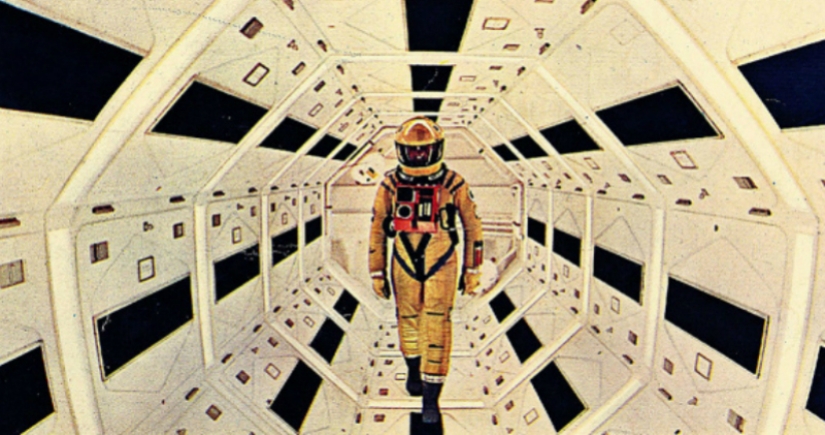
Before Kubrick's work, science fiction was limited to B movies with little green men and flying saucers. But ever since Kubrick baffled audiences with his unfathomable “black monolith” and his chilling scenes of computer-human struggle to control destiny, the genre has become a major platform for discussing the future of humanity in terms of progress and technology.
In 1964, after the release of the satirical film “Doctor Strangelove, or How I Learned to Stop Worrying and Love the Atomic Bomb,” the director wanted to make a science-fiction film - he had long been interested in the search for extraterrestrial civilizations and the theme of the future in general.
An acquaintance advised him to turn for source material for the film to one of the most erudite authors of science fiction novels, Arthur C. Clarke, known for his book “The City and the Stars” and who successfully predicted the modern use of satellite communications in one of his works.

In his letter to the science fiction author, Kubrick wrote that he was primarily interested in three topics that could become the basis for the script of a future film:
1. Reasons to believe that intelligent alien life exists.
2. The influence or, conversely, the lack of influence of such a discovery on life on Earth in the future.
3. Space mission with landing and exploration of the Moon and Mars.
Clark, who was then in Sri Lanka, quickly responded to the director and agreed to meet with him. A couple of weeks later they were talking in New York, and as material for the script, Clark offered his story “The Sentinel,” in which, according to the plot, an object is discovered on the moon that was left there by aliens many years ago. The narrator deduces that the object was left on the Moon as a sign that intelligent life is possible on Earth.
The final collaboration between Clark and Kubrick, which served as the basis for the film, received a new name many times. First it was “Journey to the Other Side of the Stars,” and the last option almost became “Conquest of the Solar System.”
In an interview, Clark admitted that he did not like the names:

The MGM studio, at that time one of the most stingy in film production, undertook to finance the filming of “A Space Odyssey.” Kubrick was very lucky - a change in management immediately began in the studio, which means a window of opportunity opened up.
In 1963, the position of studio president was taken by Robert O'Brien - an atypical, not at all bright or shocking person for a film production “official”. But the studio at that time was experiencing a financial crisis after the failure of the last major film with Marlon Brando at the box office, and O'Brien decided to bet on Kubrick's picture.
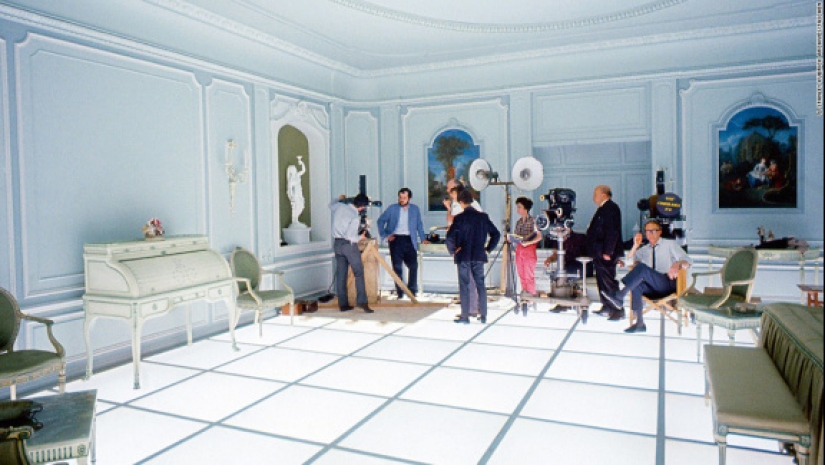


The main plot has not changed: an introductory prologue about prehistoric times with monkeys and the appearance of a mysterious monolith on Earth, a flight to the Moon in 2001 and the discovery of the same object there, and a journey to Jupiter, where astronaut Dave Bowman falls into a portal and encounters a powerful alien mind. At the time, the script was missing iconic elements of the film, such as the confrontation between Dave and the computer piloting the ship, HAL 9000.
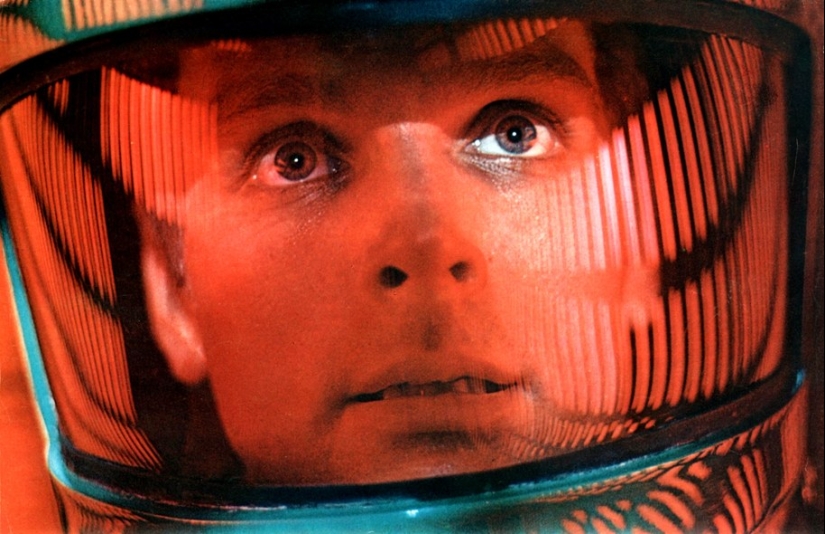
Despite the doubts of his studio colleagues and the technical difficulties of many scenes, O'Brien fully supported the director, and in February 1965 news broke that the film was going into production. The premiere was originally scheduled for the fall of 1966 - and on his copy of the contract, Kubrick separately underlined the date and signed with his hand: “Unlikely?”
As already mentioned, one of Kubrick's biggest concerns was that science fiction, and alien films in particular, had a bad reputation among audiences. The perception of any film from the genre was initially frivolous - all this was not for high cinema, but rather for comics or themed children's matinees.
Kubrick wanted to show that the question of the existence of an extraterrestrial civilization is worthy of serious discussion and attention from society. The director knew that if he managed to bring a scientific basis to this issue, then the film would definitely not be perceived as just another “mincemeat” with alien monsters and frightened heroines.
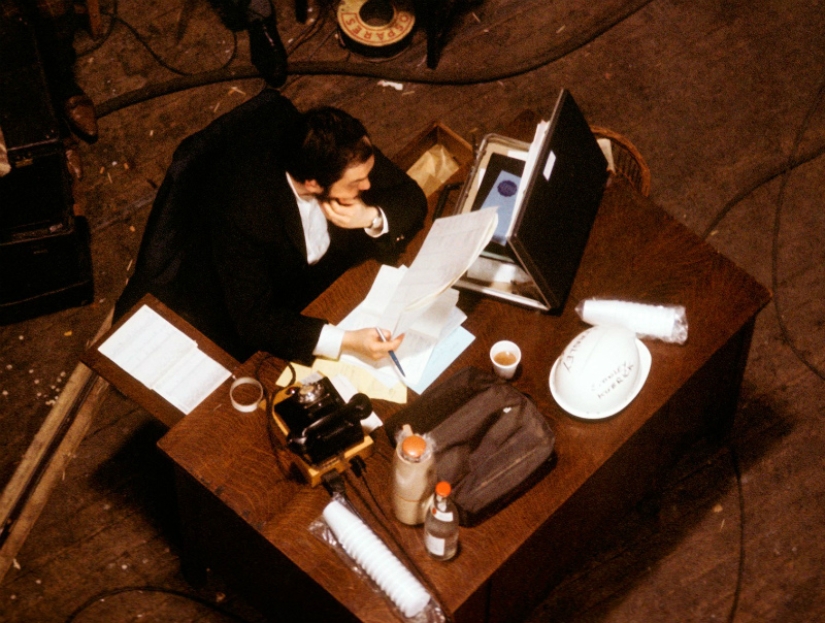
To do this, Kubrick conducted a series of interviews with famous astrophysicists, philosophers and theologians who studied the existence of alien civilizations, and inserted excerpts from these conversations at the beginning of the film - similar to how Herman Melville included descriptions of whales at the beginning of Moby Dick.
In total, the director interviewed 21 people, but the originally planned prologue turned out to be too dense - Kubrick was afraid that such an introduction could scare away the viewer and increase the already short running time. The films were archived and republished in 2005 as a book. Among the scientists interviewed was the Soviet biologist Alexander Oparin, the founder of the theory of the origin of life on Earth.
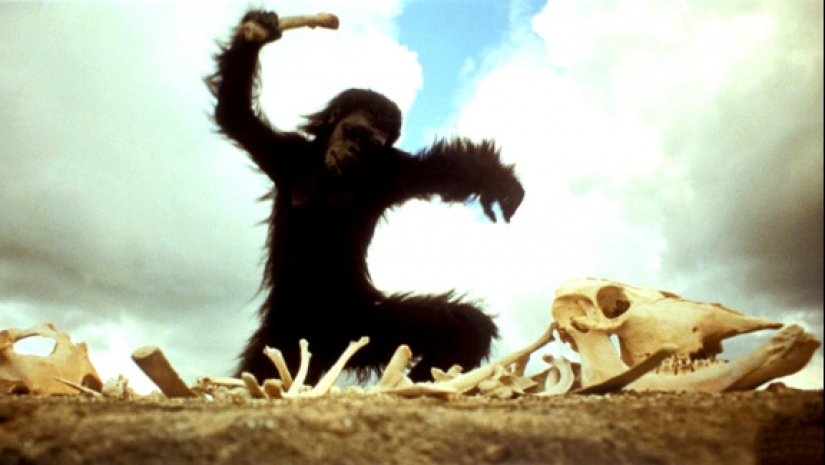
In September 1965, the vice president of Kubrick's production company, Hawk Films, received a request from the director to find a computer specialist to consult for the film.
The first computer, drawn for Odyssey by IBM design artist Eliot Noyce, was a huge cabinet-like machine—the artist drew on the technology of the time. In a letter to Kubrick, Noyce mentioned that it would be a kind of huge structure into which the characters would go. Kubrick was counting on something similar to a control panel, and not a computer center - what Noyce proposed seemed outdated.

As a result, Kubrick agreed with the visual concept proposed by the company, but decided to fill the computer with new meaning - in fact, for the first time in the history of cinema, turning an impersonal artificial “mind” into a full-fledged “villain”. This is how the sinister HAL appeared. There is a theory that the machine is named so because the next letters of the English alphabet, "H", "A", and "L" add up to IBM.
In fact, this is just an abbreviation for what a strictly scientific classification of such a device would sound like: a “heuristically programmed algorithmic computer.” The name was invented by Kubrick himself when he decided to change the original version of “Athena”.
The fact that the director did not want to offend IBM in any way by encrypting a reference to the company's name in the title of the heartless "character" is confirmed by the text of one of his letters to a friend in August 1966.
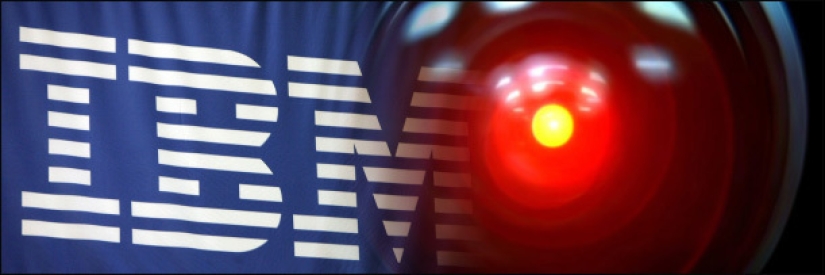
Roger responded by explaining the computer-related changes to the script in detail to the IBM people. In particular, he pointed out that in the story, the computer causes the death of people (although HAL is not associated with IBM technology). There was no negative reaction to this from the company - IBM only asked that the company's name be listed in the credits as technical consultants.
Hawk Films Vice President Roger Karas also oversaw contact with potential sponsors among major brands who could advise the film's production as experts in their field - many companies like Ford, Kodak or General Motors would be interested in thinking about their futuristic projects - and in return , perhaps get some good advertising in the frame.
The most unexpected (and ultimately failed) partnership was an attempt to reach an agreement with the fashion magazine Vogue. They agreed to come up with a "women's fashion trend - 2001", and as an experiment they planned to present the trend in the January 1967 issue of the magazine. To achieve this, Vogue even asked chemical industry giants DuPont to create a fabric called “moon fabric”. Taking into account Kubrick's remark to "do without skirts" since they would be extremely impractical on the Moon, the company intended to develop trousers for women in shiny metallic fabric.
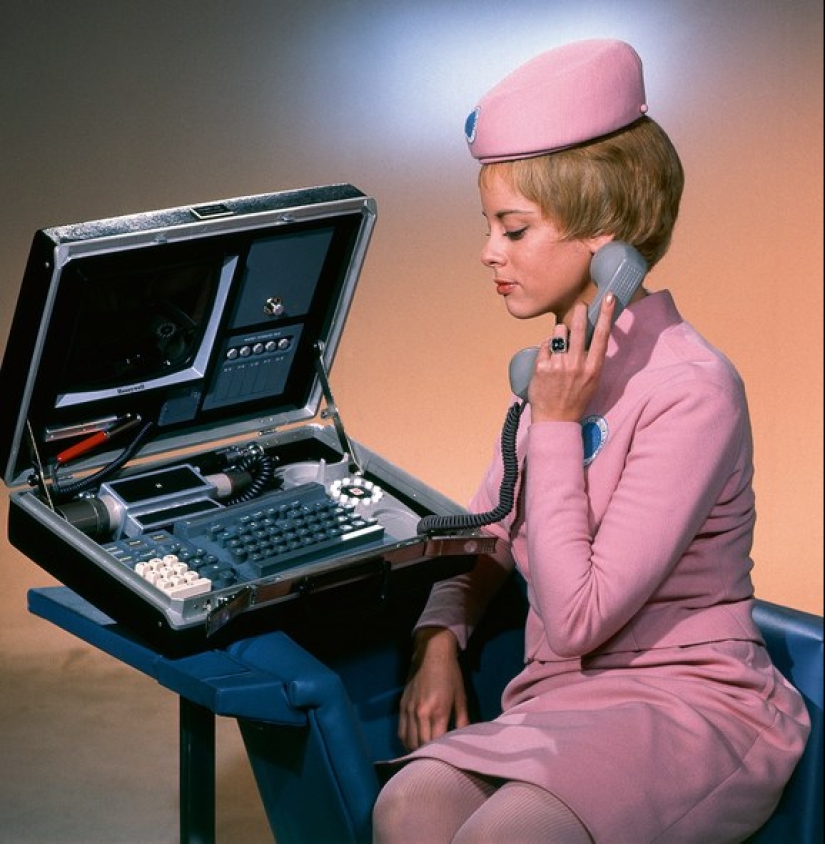
Unfortunately, it was not possible to launch the fashion trend - the January issue of the magazine was published without a planned shoot, and due to the protracted production of the film, Kubrick lost the support of the publication.
PanAm was very interested in having its logo included in the shot. But Roger warned Kubrick:
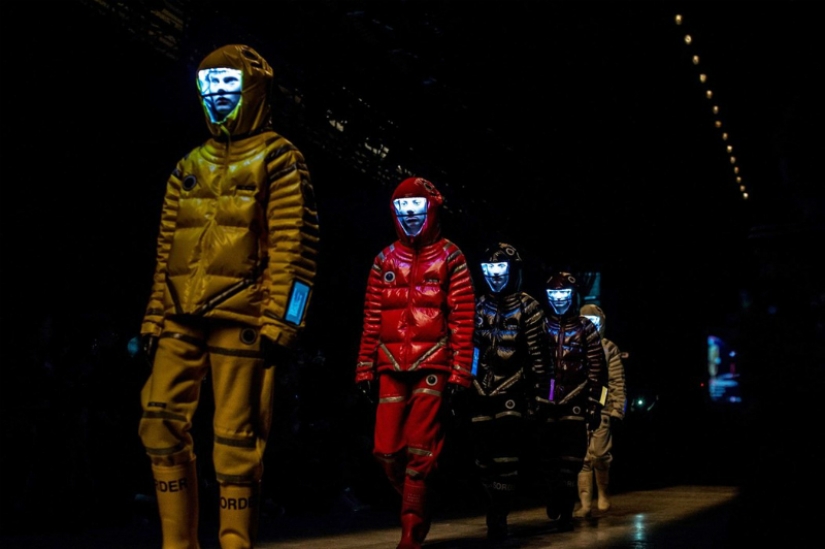
The year he started working on the film, Kubrick was 36 years old, with four films under his belt and a reputation as the “enfant terrible” of cinema. From the outside, Kubrick seemed an eccentric, irritable, withdrawn, compulsive genius. He always sought to control everything and carefully monitored his image.
The team promoting the film even received this note from him:
Directly during filming, the director came up with an unusual way of communicating with the team. Noticing that not all of his instructions were being followed, he began writing notes for the team members. If he needed something, he left a note for this person. If he still forgot about the assignment, Kubrick would ask whether the recipient had received the note. Naturally, many simply said that they received nothing. Then Kubrick ordered that every time a note was received, a letter should be reported about it. At some point, three typists worked for the director, processing official letters.
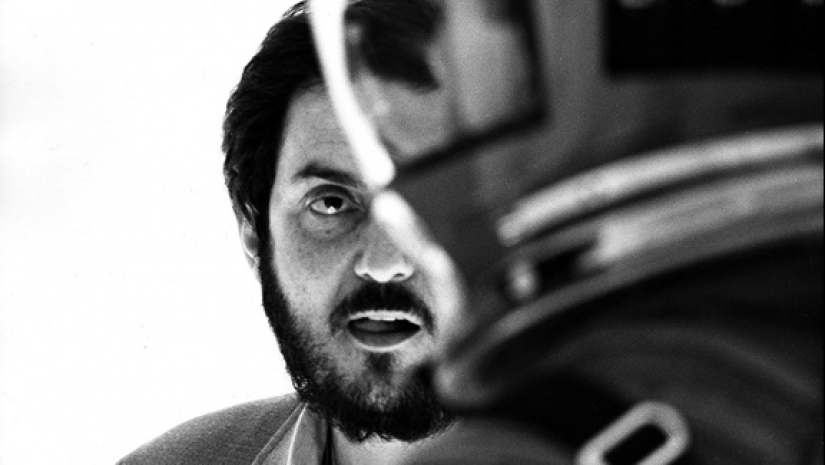
The official start date for filming was December 29, 1965. But the production's slowest moments came in the film's opening scenes, the prologue, which required an African desert-like setting.
Nowhere except Africa itself was such a location found, so the team members flew there and filmed several locations in Namibia so that they could then use front projection against these images - combining images of actors and objects with the captured landscapes.
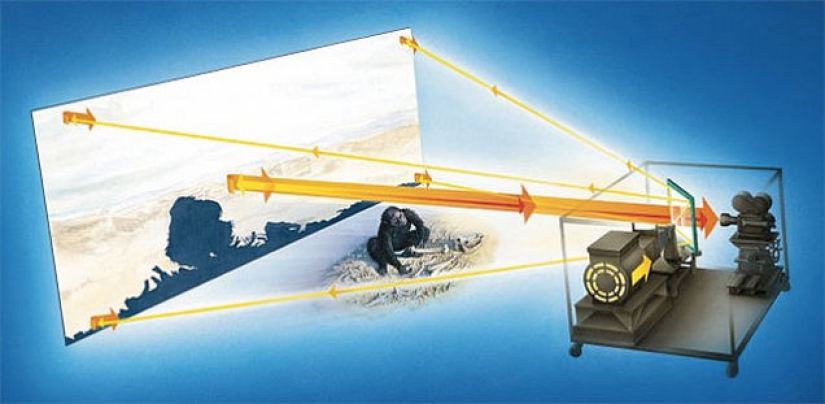
The most complex piece of decoration was the centrifuge on the spaceship, which rotated, simulating gravity. The construction, with a diameter of 12 meters and a weight of 40 tons, took six months and 750 thousand dollars - while rotating, it still creaked and made a loud crack. During the filming of scenes in which the centrifuge was rotated, some things were forgotten to be secured - in such cases everything fell on the film crew. And due to the power of the lighting, the lamps often exploded, showering the group with shrapnel. In general, real survival, not filming.
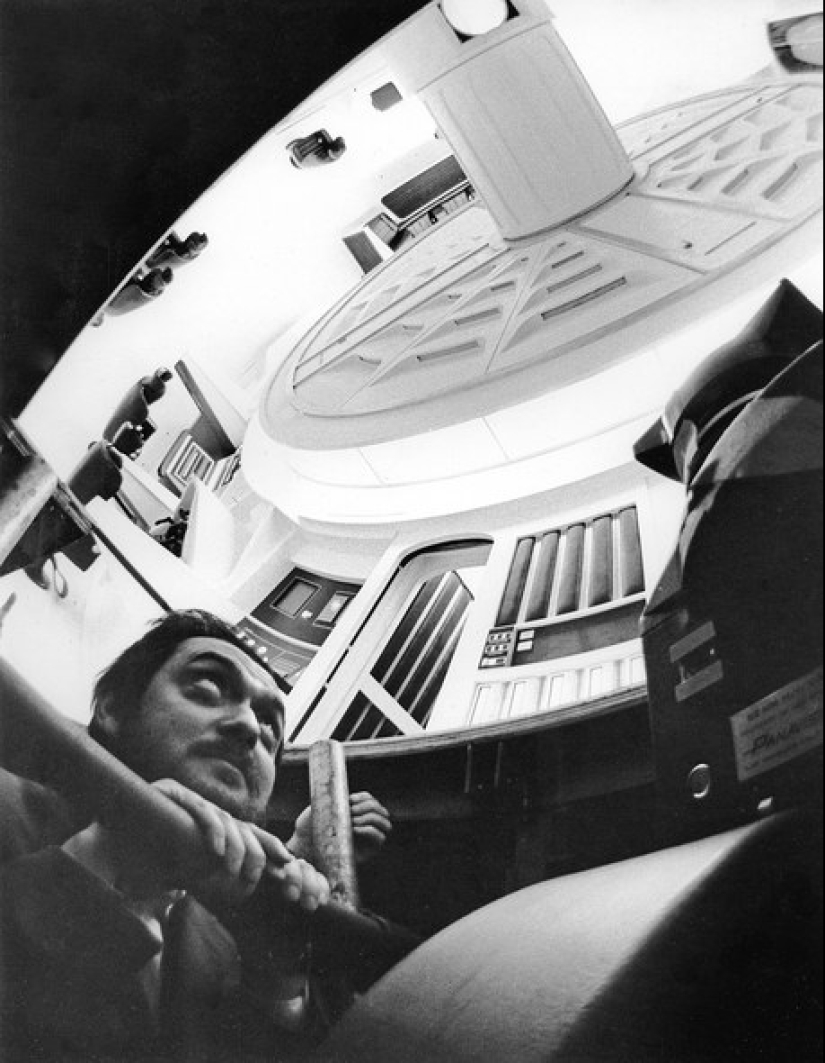
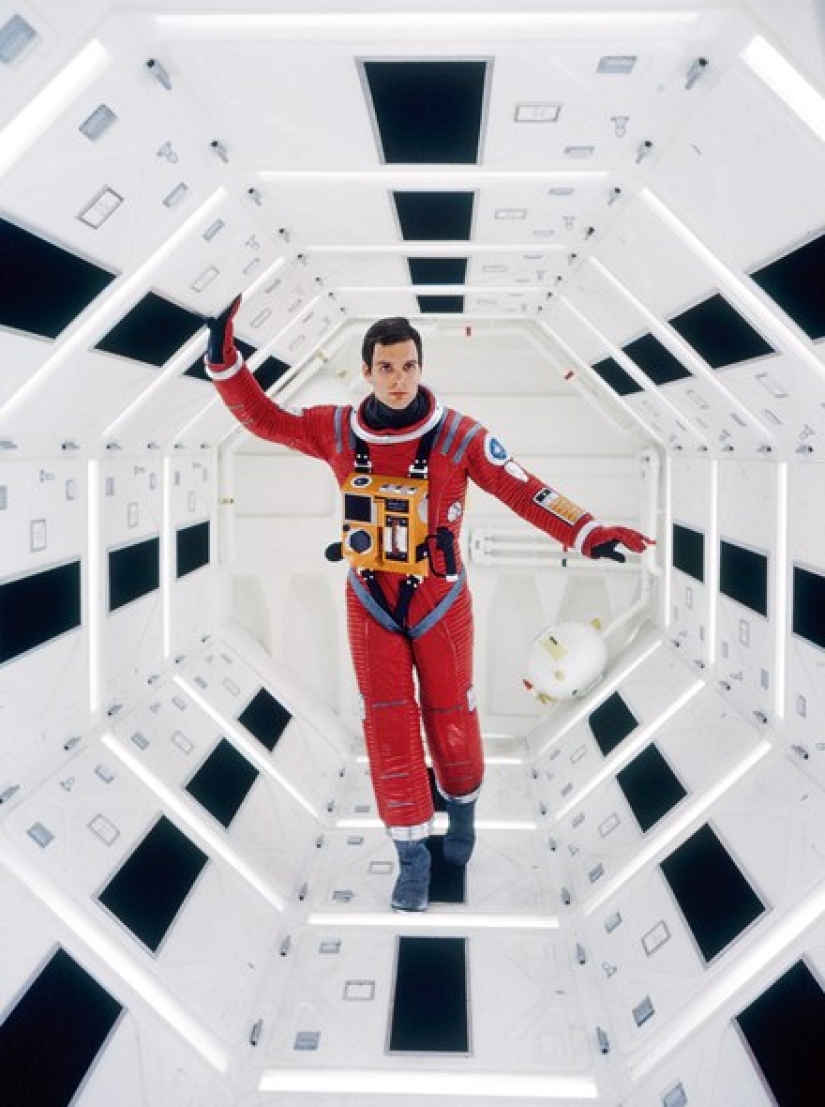
Premiere screenings began in April 1968. Reviews were mixed, and many critics were confused. The famous film critic Rock Hudson stood up from his seat at the end of the screening and said: “Can someone tell me what kind of nonsense I just watched?”
Meanwhile, the studio’s marketers couldn’t think of anything better (and more ridiculous) than to advertise the film as “a film for the whole family.”
The director received letters from viewers. One mother, who took her family to a double showing of Winnie the Pooh and A Space Odyssey, accused Kubrick of being incoherent and an “insult to art, space and the wallet” and demanded that the $3.50 she spent on the ticket be returned to her.
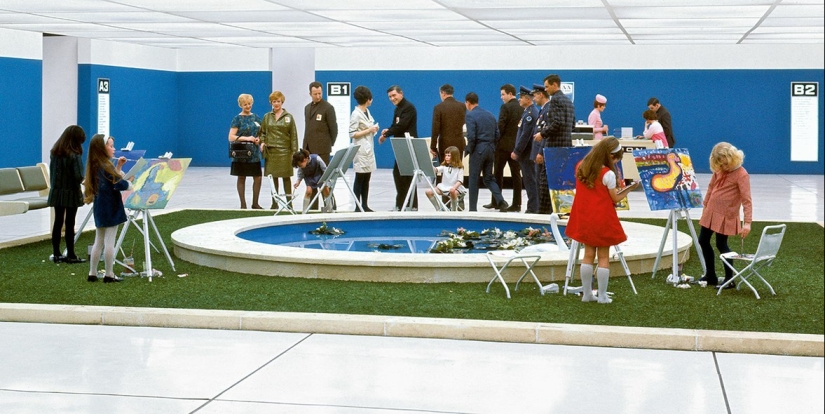
Young viewers, on the contrary, liked the film. One 14-year-old boy wrote to Kubrick: “You know what the critics say. Here's my opinion: screw the critics!
One pastor even wrote that he recommended Kubrick's film to all his parishioners "because your cinema is an example of great entertainment, unlike so many violent films."
Perhaps most of all, Kubrick should have been inspired by the reaction of his colleagues. This is what Federico Fellini wrote to him, who included “A Space Odyssey” among his ten favorite films:
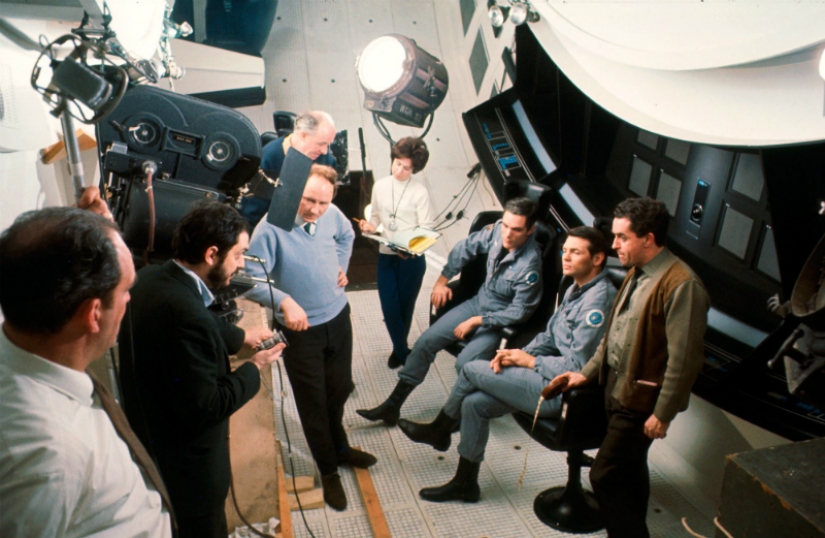
As Kubrick believed, the meaning of “The Odyssey” could not be conveyed in words - that’s why he cut out all the off-screen explanations and unnecessary speech from the 2.5-hour film, leaving only 40 minutes of dialogue.
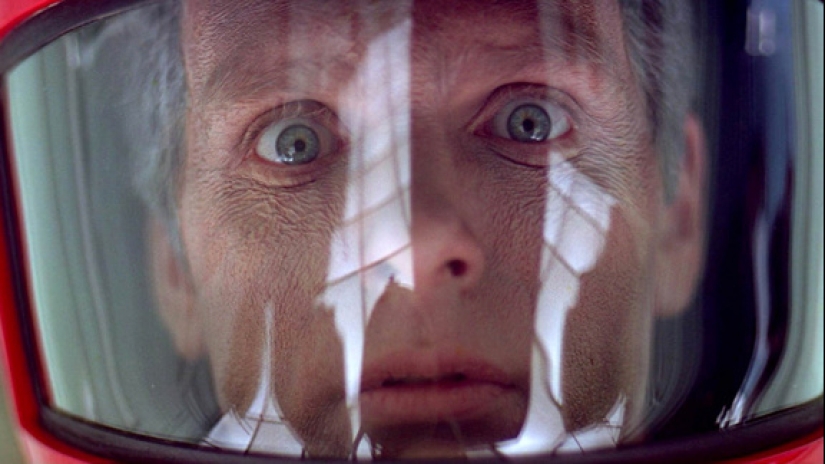
In 1969, the film was nominated for an Oscar, but only won the statuette for its visual effects. And who now remembers the musical called “Oliver!”, which won the Oscar for Best Picture that year? The Academy also did not understand the director, as did the army of critics, but time put everything in its place.
Recent articles

Straws are such a commonplace item that we rarely think about their origins. It seems they've always been around: in cocktails, ...

In the Victorian era Britain was quickly urbanized. By 1851 it became the first country lived in cities of more people than in the ...

Every day we face some trouble. The technique is slow, when you need something rushed, all traffic lights you come across on the ...